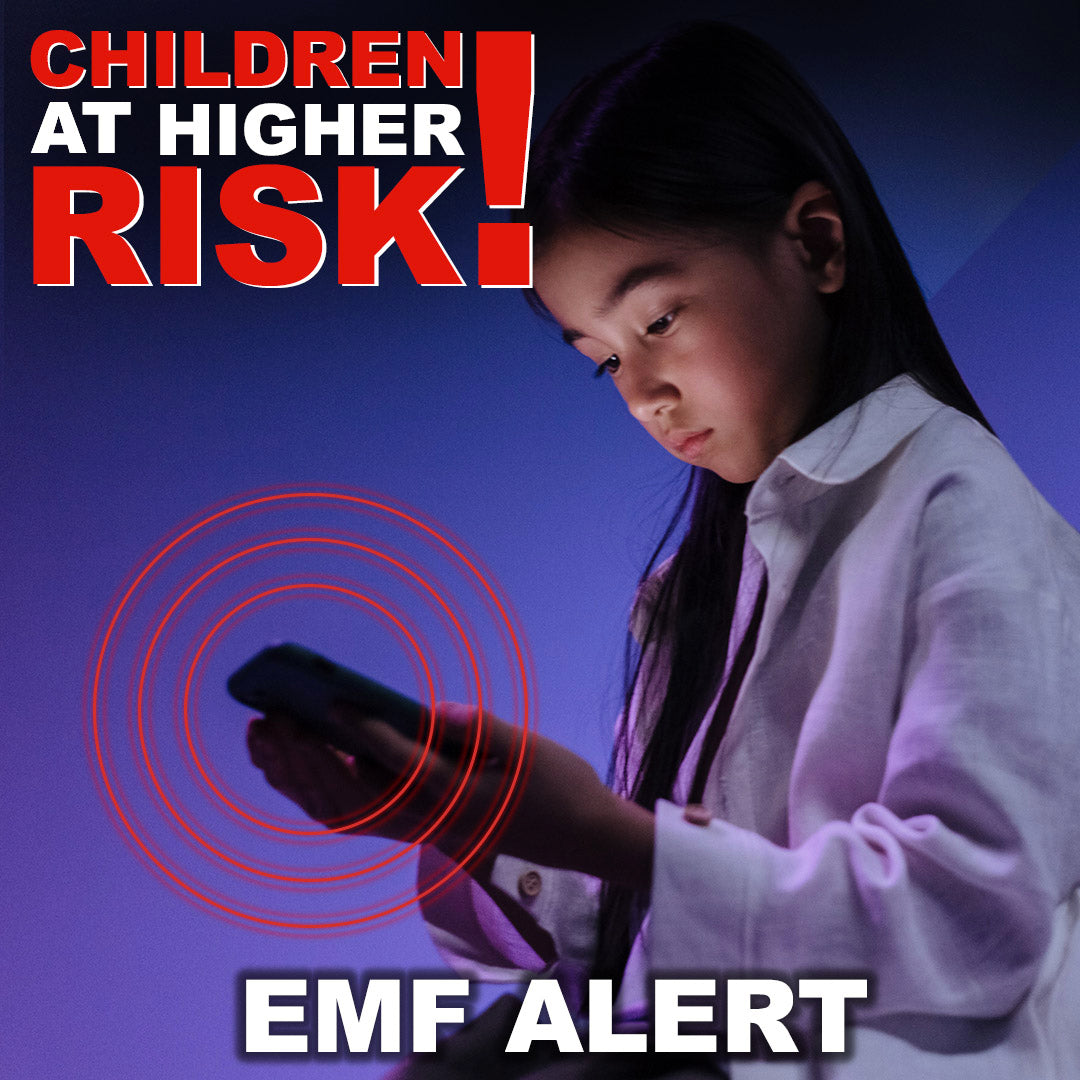Electromagnetic Hypersensitivity

Our physical bodies all work pretty much the same manner as humans. We require the same necessities to survive, and we have the same organs and cellular functions. No two human bodies are alike, even with this seeming similarity on the outside. Similarly, while electromagnetic field radiation (EMF) has the capacity to harm us all, some of us are more vulnerable to its effects than others.
EMF radiation-emitting devices can cause tingly skin, pain throughout the body, headaches, weariness, dizziness or nausea and stress when they are in close proximity to one another. Managing more severe symptoms such as seizures, issues with various body systems, and cancer can make EMF hypersensitivity extremely challenging.
Electrosensitivity, often referred to as electromagnetic hypersensitivity (EHS), is a condition that can occur when symptoms of electromagnetic field exposure are frequent, severe, and sometimes persistent even after you've moved yourself from the source of radiation. In more advanced phases of this physiological illness that is still largely unrecognised, symptoms may cause individuals to seek medical attention or make them unable to live or work near wireless technology.
Unfortunately, those who visited physicians with symptoms of electromagnetic hypersensitivity syndrome (EHS) are usually classified as mentally ill because electromagnetic radiation has only lately come to be recognised as a health threat. Patients who suffer from such disorders that the vast majority of people are unable to understand or even accept are stigmatised in addition to receiving treatment that completely disregards the actual cause of their illness.
Neural Irregularities in Electromagnetic Hypersensitive Patients
There is newly released evidence that proves that EHS exists. 10 individuals with this condition had functional MRI brain scans in 2017 in order to search for any unusual patterns. The same area of the brain showed consistent abnormalities in every one of the 10 patients. This study also highlighted the fact that patients with EHS exhibited symptoms that were similar to those individuals who had been exposed to neurotoxic substances over an extended period of time. 8 out of the 10 participants experienced this type of exposure in the past. The years afterwards, they started to experience symptoms of neurological disorders (such as headaches & cognitive impairment) that started when they were exposed to electromagnetic radiation and normally decreased after they were far removed from the source. This implies that the effects of radiation from electromagnetic fields and neurotoxic substances may intensify one another. It is also important to note that 7 of the 10 research participants either worked or resided extremely close to sources of strong electromagnetic fields.
Australia began putting out smart metres in the state of Victoria in 2006. The inability of a whole population to escape exposure to high frequency, non-ionizing electromagnetic radiation created by humans resulted in an unparalleled public health hazard. Unintentionally, more than 142 individuals claimed negative health impacts from the wireless smart metres, which were recorded by information submitted on the websites of the Australian public health. When smart metres were exposed to wireless radiation, the most common symptoms that people reported experiencing were migraines, tinnitus, dizziness, fatigue, dysesthesias, and insomnia. The implications of these symptoms on the lives of individuals were serious, as reported in a research which published in the Alternative Therapy Health Medicine issue published in 2014. The symptoms observed by those affected matched those of people who had been exposing themselves to wireless radiation from various other smart devices, such as smart phones and WiFi.
EHS: Predominantly Affects Women

Gender could be a further cause of risk for the development of EHS.
It is odd that women are more likely to experience EHS symptoms than men, considering that men usually have majority of jobs necessitating close proximity to EMF radiation sources. Surveys conducted in the Netherlands, Finland, and Japan revealed that women made up the great majority of those with EHS symptoms: 68 percent, 81 percent, and 95 percent, respectively.
Why does it seem that women are more likely than men to develop EMF sensitivity? We currently don't completely understand a lot about this ailment because not much research has been done on it. Before we can pinpoint the precise cause of this tendency, more investigation is required.
We are aware, however, that several diseases seem to strike males more frequently than females. For instance, males are roughly 3 times more likely than females to die from AIDS and twice as likely to die from liver disease. In contrast, women make about 90% of lupus sufferers. Thus, it's possible that women have a greater predisposition to EHS due to biological differences between them.
There is no question that additional research and studies are required on this topic in order improve our awareness as well as to get wider recognition for EHS as a legitimate illness with devastating consequences.
Conclusion
These are some ideas to ponder, extracted from the surveys linked above:
- About 85% of respondents to the Japanese survey said they had to take precautions against electromagnetic fields such as relocating to a location with fewer radiation sources or purchasing appliances with low EMF emissions. Approximately 50% of the participants had prior work experience; still the majority faced either job loss or income reduction. 12% could not go by public transport any more.
- In the Finnish survey, 76% of participants stated that minimising or avoiding electromagnetic fields (EMFs) aided in their complete or partial recovery. Medication and psychotherapy, the recommended courses of treatment, did not prove to be particularly beneficial; only 2.6% and 4.2% of patients, respectively, reported some degree of alleviation from these approaches.
- In the Netherlands, over 50% of the participants stated that they had previously received a diagnosis of multiple chemical sensitivity (MCS), chronic fatigue syndrome or other incapacitating psychological conditions.
- After EHS was developed, the most common causes of problems for persons examined in the Netherlands were, surprisingly, wireless home appliances like laptops and smart phones—not cell towers or other similar high-radiation emitters.
When it comes to having a complete understanding and awareness of electromagnetic hypersensitivity, we have only scratched the surface. EHS is a significant health issue that needs to be discussed and thoroughly researched as we dive headfirst into the wireless era.








Leave a comment